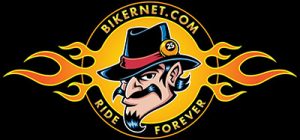BIRTH OF THE FACTORY CUSTOM
Here’s an original boat tail, 1971 Super Glide. MILWAUKEE (July 23, 2005) – Even 35 years after its introduction, the 1971 Harley-Davidson FX Super Glide remains one of the definitive motorcycles in Motor Company history. Distinguished by its long “boat tail” fiberglass rear fender section, the FX Super Glide combined the Big Twin FL chassis […]
BIRTH OF THE FACTORY CUSTOM Read More »
